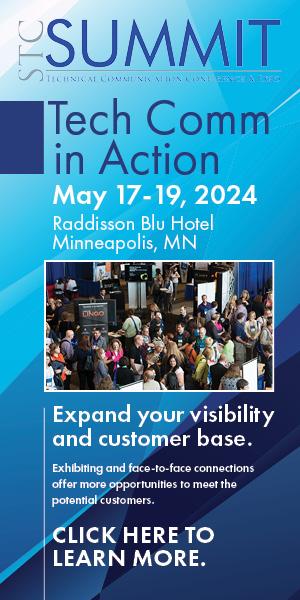How we are breaking the engineering, design, and content silos for a better experience for users.
By Jenifer Schlotfeldt and Missy Yarbrough
How times have changed! Gone are the days when technical writers were thought of as copy editors, or someone who took a technical specification and made it understandable to the wider world. In today’s technical writing world, we have automated content quality checking tools, and Jenifer can’t remember the last time she documented a feature beginning with a specification. Our focus is increasingly not on books or other traditional deliverables, but on user interfaces.
New Names for Updated Roles
As our focus and skills change, so do our titles to more accurately represent the work we do. Instead of using the title “Information Developer,” which is the IBM equivalent of the wider industry’s “Technical Writer,” Jenifer has asked her team to use the title “Content Designer.” As content designers, we are looking at the total content experience. We define a content journey from marketing to the product to support information. We’re ensuring that users can find the content, regardless of whether we are creating embedded assistance or leveraging SEO to discover a tutorial.
As such, content designers should be collaborating with many different departments in the company, including marketing, support, development, and design. While the other areas are necessary to a product’s creation, it’s the design collaboration that is crucial to ensuring the best experience for the user.
At IBM, there are a few key roles that are involved in understanding and addressing user needs, including design researchers, user experience (UX) designers, front-end developers, and visual designers. While each role might appear to be distinct, they each implement their specialties in a highly collaborative manner for a tightly integrated outcome.
Cross-Discipline Collaborative Design
Faced with complex problems, the design process typically starts with simple beginnings: uncovering user challenges and understanding users’ respective as-is scenarios. Serving as the direct connection to the pulse of our users, our design researchers dig deeply by using both quantitative and qualitative research methods. Their resulting research insights inform fellow product members of the users’ interactions with the product.
Equipped with empathy and validated knowledge, UX designers conceive experiences and supply solutions that fulfill product requirements.
In tandem, front-end developers are brainstorming ways to make design concepts become real and practical for coding.
Throughout the process, our visual designers are responsible for creating lasting visual connections with our users while elevating the core essence of the product.
In our team, we work in squads that include members from development, design, offering management, and content departments.
As new features are committed to the development plan, design is first to take the lead. Being the compassionate touchpoint, our design researchers will get in direct contact with our users to understand how they consume the product and any resulting pain points or delights they have experienced. In conjunction with our analytics team, they also collect quantitative data that further validates user feedback.
Researchers connect with the UX designers to assess users’ current landscape, taking into consideration the multitudes of context in which users might be engaging with the product. UX designers will then thoughtfully apply the findings by considering increments of improved experiences—future versions of the experience that are playfully referred to as the cupcake, birthday cake, and wedding cake stages. While conferring with development and offering management teams, the design team defines a design-centric roadmap containing priorities for the squad to agree upon.
Once we have alignment within the squad, the various disciplines diverge to produce deliverables that better the users’ interactions and engagement with the product. Research distills additional feedback from users through wireframes and prototypes that visual and UX designers create. Meanwhile, front-end development bridges the lines of communication and collaboration with our respective back-end teams by assessing the technical viability of design concepts. Offering management continues to ensure that we are aligned with both business needs and user needs.
Content in the World of Collaborative Design
You might be wondering, “How does the content designer engage with this nebulous complexity of team interaction?” The key is finding the sweet spot during the process when content designers should fully engage. The designs need to be in a state where the changes are small, but not yet handed off to development to implement, so that content designers can have an impact.
How do content designers have an impact? In two ways:
- Terminology: Collaborating with design researchers, content designers can identify terminology to be tested. What term is going to resonate best with your users? Terminology discussions tend to be very opinionated. User data can always break the opinionated tie.
- UI design: When collaborating with both UX designers and front-end developers, content designers can provide content feedback on the user interface. For example, you might point out that if the UI can programmatically determine a value, then less documentation might be needed, because you won’t need to explain to the users how to determine that value. Content designers might also impact the flow of a UI screen simply by sharing drafts of topics. Seeing how the task will be explained to a user can point out where the sequence might be off.
In the end, when we bring together design and content, the user experience benefits. Users aren’t left abandoned during their content journey while learning to use the product, the user interface is easy to use, and the user is successful in accomplishing their goals.
JENIFER SCHLOTFELDT (jschlot@us.ibm.com) is a Senior Content Strategist and the Content Experience Architect for IBM Cloud. Jenifer leads a team of software engineers and content designers that own the IBM Cloud Content Experience. Not only is the team supporting continuous delivery of the IBM Cloud Docs, but it also embraces DevOps and Design Thinking practices. She is also the co-author of DITA Best Practices: A Roadmap for Writing, Editing, and Architecting in DITA, published in 2011.
MISSY YARBROUGH (myarbrough@us.ibm.com) is a Product Designer for IBM Cloud. Missy collaborates with various internal stakeholders from multidisciplinary teams to bring about better cloud platform experiences. She also enjoys introducing and discussing the value of design in everyday life activities. When she’s not in the office, she is often traveling, listening, and observing people’s incredible ways of fulfilling life.


